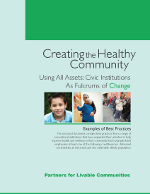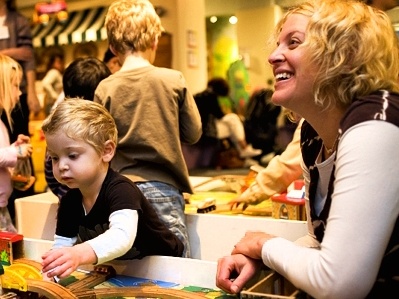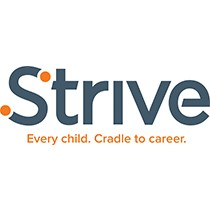
Partners compiled a collection of best practices of traditional community institutions incorporating health and wellness into their agenda and programming to improve community health. The best practices focus on improving the health of at least one of three constituencies: distressed communities, at-risk youth, and the vulnerable elderly.
Examples of institutions include arts and culture organizations, botanical gardens, community development corporations (CDCs), faith-based organizations, libraries, museums, public markets, and zoos.
Click here to download Creating the Healthy Community - Using All Assets: Institutions as Fulcrums of Change
Read more »
Terms:Aging, Community Building, Community Development, Community Engagement, Creating The Healthy Community, Cultural Institutions, Health & Wellness, Healthy Communities, Institutions as Fulcrums of Change , Intergenerational, Libraries, Program Areas, Public Health

For residents of Chicago’s northern suburbs, the Chicago Botanic Garden is much more than just a collection of colorful plants and flowers. Since it opened more than 40 years ago, the 385 acre grounds have served as an important center for community activity and education. The Garden is home to 26 separate gardens and four natural areas, as well as a conservation science education center and a library with one of the country’s largest collections of botanical books. The grounds are also host to numerous community events and educational courses throughout the year.
Read more »
Terms:Arts & Culture, Chicago, IL, Community Development, Creative Economy, Cultural Institutions, Design, Environment, IFC Best Practice, Institutions as Fulcrums of Change , Parks, Playgrounds & Gardens

The Habitot Children’s Museum first opened its doors in downtown Berkley in 1998, and the institution has served over 950,000 residents of underserved communities in the Bay Area since. The 7,000 sq. foot facility is home to exhibits that help teach kids about the value of physical activity, water preservation, and art and culture. The hands-on Museum encourages early childhood education and aims to help support a generation of curious and creative kids.
Read more »
Terms:Arts & Culture, Community Building, Creative Economy, Cultural Institutions, Downtown Development, Education, Families, IFC Best Practice, Institutions as Fulcrums of Change , Museums, Youth

In today’s economic climate, trying to find a high-paying job without a college education is nearly impossible. That is why the leadership at Indiana University-Perdue University Indianapolis started their Community Learning Network that focuses on continuing education and lifelong learning. Each year the network provides more than 600 continuing education classes to over 7,000 residents in Central Indiana.
Read more »

The Strive Partnership is an effort launched by community leaders in the Cincinnati region in 2006 that relies on innovative strategies to improve student education outcomes. The Partnership has designed a strategic approach to education reform that can be applied to communities throughout the country. The approach relies on a collaborative effort from community stakeholders from all sectors of the economy to encourage learning and development beyond the walls of their schools.
Read more »
|
|